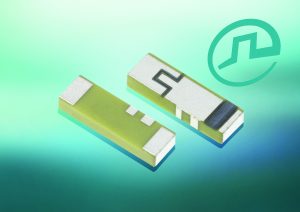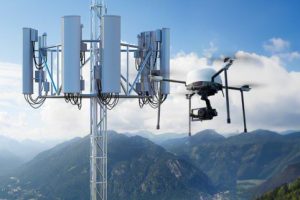
The Pulse W3056 compact GPS and Bluetooth, Bluetooth Low Energy, Wi-Fi ceramic antenna measures just 10×3.2x1mm
There is huge scope for connected medical devices, whether it is equipment that monitors patients’ vital signs or wearable activity monitors. Healthcare is widely thought to be one of the biggest potential applications for the internet of things (IoT).
According to a report from MarketResearch.com, the healthcare IoT market is set for a boom, hitting $117bn by 2020. This market relies on connected medical devices that offer data about the condition of patients and, crucially, offer better access to this information than existing systems, so that doctors can make faster, better‑informed decisions about treatment.
The medical IoT
The medical IoT is about connecting medical devices that did not previously have the ability to communicate with one another.
For example, vital signs data from a patient may be sent to their medical records directly from monitoring equipment. This eliminates the need for data entry, which would normally be done by a medical professional, and removes the risk of human error that goes with it. It has the potential to revolutionise healthcare.
The medical IoT is also seeing the introduction of new types of medical devices, such as wearable sensors that monitor patients in their homes and collect the data for doctors to analyse. This can be much more reliable than asking patients to monitor themselves and record the data and, in extreme cases, such wearable sensors can allow patients to be discharged earlier, freeing up hospital beds.
In order to effectively monitor those at risk from cardiovascular disease, blood pressure and blood glucose levels need to be reported, along with lifestyle information, such as activity and diet. With access to accurate, reliable data on these factors, doctors can make better‑informed decisions about the best treatment for each patient, including recommending proactive lifestyle changes that can prevent the onset of cardiovascular disease.
Self-monitoring, automatically reporting medical devices could even mean no more routine check‑ups, as constant monitoring would mean the patient only needs to see the doctor if the sensors report a problem.
Medical wearables
The majority of IoT applications in the medical sector fit into this second category – small, portable or wearable devices that monitor patients in their own homes and collect data to report back to doctors. ABI Research projected that this market would exceed 100 million devices in 2016.
This equipment could include blood glucose monitors, electrocardiogram (ECG) monitors, pulse oximeters and blood pressure monitors. The design challenges associated with such devices include packing high functionality into very small spaces, power efficiency for battery-powered equipment and reliability. They are driving the development of new wireless and antenna technologies for the medical device market.
Wearable medical devices share the design challenges facing other wearable devices. For example, they are held in close proximity to the body when in use, which can cause performance problems for device antennae as the body can block RF signals. The only real solution to this is to try to physically separate the antenna from the body, that is, place it as far as possible from the body, on the outer edge of the device.
Another problem is space; a lot of electronics needs to be crammed into some extremely small form factors. It is important that medical wearable devices are as small and lightweight as possible so that they do not interfere with the user’s movements or impede their lifestyle.
For example, consider a wireless insulin pump controller that communicates with a disposable insulin delivery patch stuck to the body. The controller, a compact portable device which is carried by the user at all times, sends the required dose information to the patch, and uploads delivery data to a cloud service where it can be analysed. Communication might be via Bluetooth Low Energy, ZigBee, or another low power protocol.
The antenna options
A very popular antenna type that meets the performance and space requirements of wearable medical devices is the ceramic chip antenna.
These are optimised for use in space-constrained devices, as they come in tiny packages, saving space when compared to PCB trace antennae. Another advantage is that, compared to PCB trace antennae, they are less sensitive to detuning from contact with the human body, provided they are located sensibly.
Most pre-certified wireless modules use ceramic chip antennae, so a developer going down this route must be sure to place and orient the module as per the manufacturer’s instructions. Otherwise, placing it so the antenna is in an external corner is a safe bet, positioning it as far as possible from the rest of the electronics and the body of the wearer.
Flexible antennae, already widely used in portable devices such as mobile phones, are another option for medical wearables. This type uses the same technology as flexible PCBs to form a type of PCB trace antenna.
The form factor is an extremely thin metal pattern on a flexible plastic substrate, which can be mounted to the inside of the device case. These antennae do not require any board space and offer good performance, so typically represent a cost-effective solution. However, the placement of the antenna must be carefully considered if it is to deliver optimal RF performance.
In addition to flexible antennae, 3D moulded interconnect device (MID) technology (produced by direct metallisation on moulded plastic) offers a powerful solution for antenna integration in mobile devices.
Utilising a variety of manufacturing technologies from MID to flexible circuits and ceramic chip, Molex creates, customisable antenna products supporting multiple protocols for IoT devices.
Technology advances
Adoption of the medical IoT is also driving new antenna types and technologies for wearable devices.
For example, TE Connectivity is working on a technique called three‑dimensional ink direct structuring (3D IDS), in which antenna patterns are directly printed on to the case of the product, with no other substrate. Removing the substrate saves millimetres of space inside the device and will result in cost savings, says TE, although the technology is still at the development stage.
Researchers from North Carolina State University, meanwhile, have developed a stretchable antenna technology that could be used in wearable medical devices. It can be stretched, twisted or rolled and will return to its original shape.
The antenna is constructed by creating a pattern of silver nanowires encased in a flexible plastic. Stretching the antenna assembly does change its frequency of operation, but the researchers say that the stretched frequency is within the bandwidth required for effective communication.
This technology could enable the next generation of wearable medical device form factors, perhaps even integrating them into clothing.Wearable medical devices have the potential to become one of the biggest markets for IoT technology. However, they present specific requirements for antenna technologies, such as space constraints, and difficult RF conditions caused by proximity to the body.
Typical devices in use today have ceramic chip antennae and flexible PCB pattern antennae, but demand from the medical sector for new and different form factors for wearables continues to drive development of completely new antenna techniques.
 Electronics Weekly Electronics Design & Components Tech News
Electronics Weekly Electronics Design & Components Tech News




